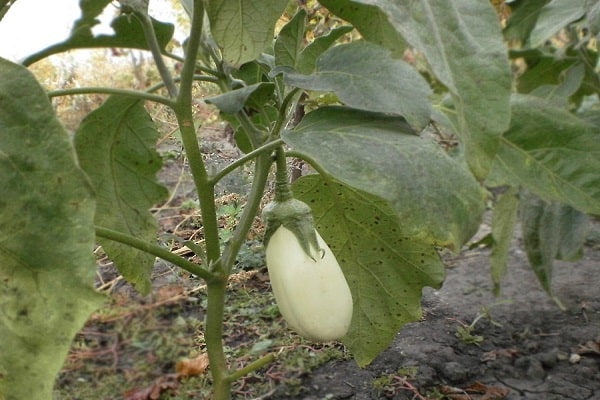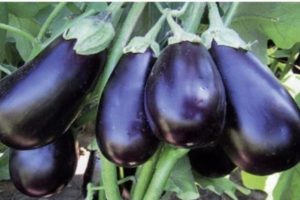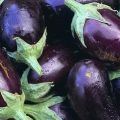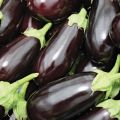Description of varieties of white eggplant, their advantages and disadvantages
Today, various agro-seed companies offer a wide range of eggplant varieties. Each culture has its own color, shape and taste. Recently, white eggplants have become very popular. This demand is not accidental. These crops have many advantages over purple eggplant and other colors.
Description of white eggplants
White eggplants, as they are also called eggplant, were obtained by selection from existing varieties of purple eggplant. The purpose of creating new crops was to improve commercial qualities. The fact is that purple eggplants, despite their beneficial properties, have a specific bitter taste.
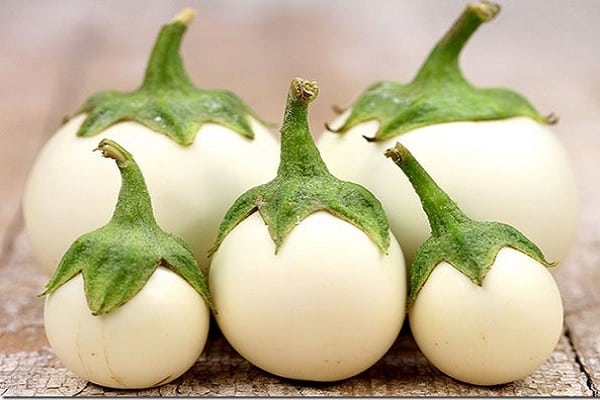
As time has shown, the breeders have coped with the task successfully. The resulting hybrids turned out with white color and original taste, without bitterness. In addition, these crops are endowed with more tender pulp with fewer seeds. Such qualities make it possible to use the fruits not only in preservation and preparation of hot dishes, but also fresh without heat treatment.
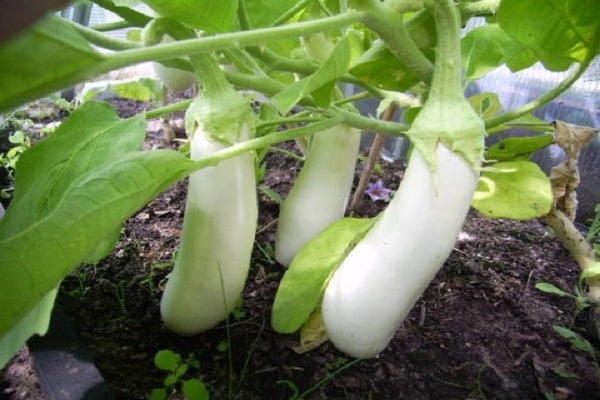
White eggplant hybrids
All white eggplant hybrids have the same color. However, they differ in terms of maturation, taste and shape.
Consider the most popular hybrids that have gained great popularity among gardeners.
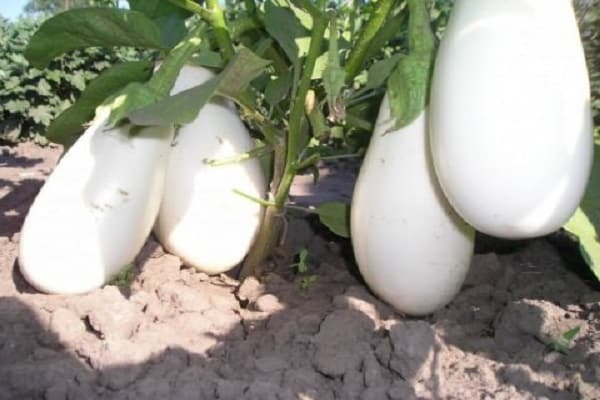
Iceberg
Iceberg is a mid-early culture. The growing season from germination of seeds to the beginning of harvest is 115 days. The bush itself is of medium height. When grown outdoors, it reaches 40-45 cm, in greenhouse conditions, about 60 cm.
Description of fruits:
- weight - 180-200 g;
- shape - oval;
- size - up to 20 cm in length;
- the pulp is juicy, without voids;
- the taste is spicy.
The plant is valued for its stable fruiting and resistance to various diseases. At the same time, Iceberg fruits tolerate long-term transportation, which favorably affects their sale.
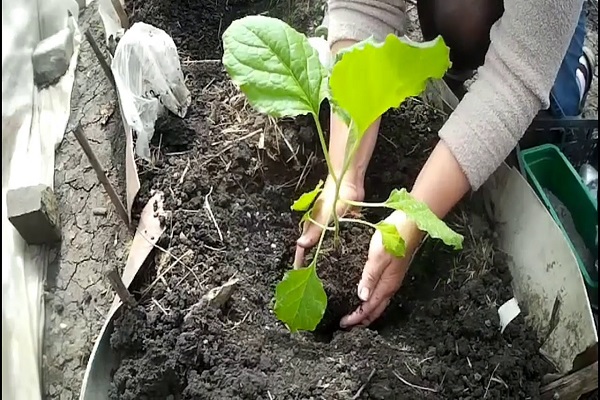
White Night
The ultra-early ripening hybrid White Night is able to give the first harvest of fruits already on the 75th day after planting the seeds. The bushes of the plant are compact, small in size. On average, eggplants grow about 70 cm. The hybrid is high-yielding, with 1 sq. m gardeners will be able to collect about 8 kg of vegetables.
Description of fruits:
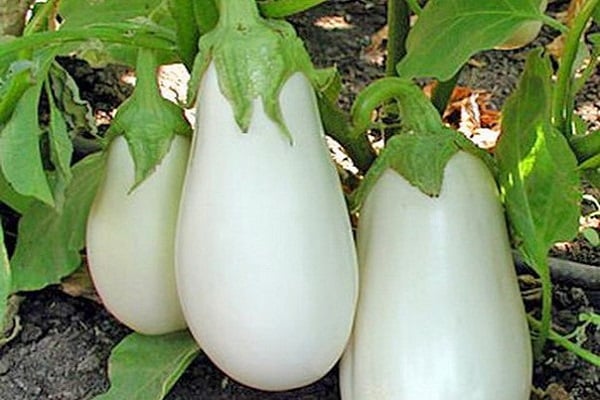
- weight - 280-300 g;
- form - closed;
- size - 25 cm in length;
- the pulp is tender;
- the taste is sweetish.
This hybrid is well suited for open ground and greenhouse structures. It does not require the formation of a bush and a garter to the support. In addition, White Night eggplant has a high immunity to viral and infectious diseases, which simplifies the process of its cultivation.
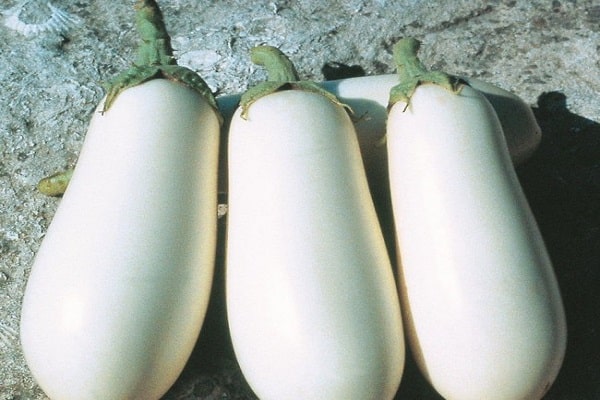
Fluff
Fluff is a fairly early eggplant.The technical ripeness of the fruits occurs on the 115th day after sowing the seeds. The hybrid is suitable for growing in film shelters and in the open field.
Eggplant Fluff is a representative of tall crops. Its bush can reach 170 cm in height. Therefore, he needs to be shaped and tied to a support.
Subject to the rules of agricultural technology, the yield of the hybrid is 5-6 kg per 1 sq. m.
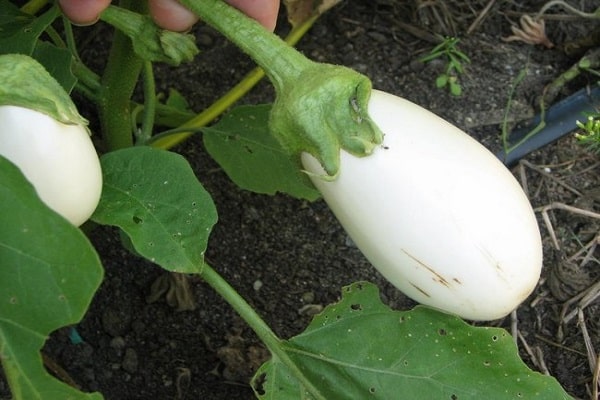
Description of fruits:
- weight - 200-210 g;
- size - up to 25 cm in length;
- shape - oval;
- the pulp is dense;
- the taste is good.
The Fluff hybrid is intended for cultivation only in greenhouse conditions. In the open field, the fruits of this culture lose their marketable appearance and the ability to be transported over long distances.

Mushroom taste
Culture The taste of mushrooms is early ripening, the growing season from germination of seeds to technical ripeness of fruits is 105 days. The yield of the hybrid varies from 6 to 8 kg per 1 sq. m.
Description of fruits:
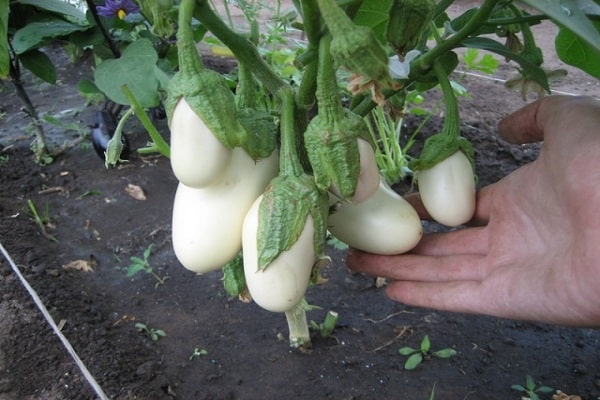
- weight - 180-200 g;
- size - 20 cm in length;
- shape - elongated;
- the pulp is juicy, tender;
- taste - spicy mushroom.
A distinctive feature of the Mushroom Taste hybrid is that it is intended for outdoor cultivation. In greenhouse buildings, the culture loses its resistance to various diseases and pests.
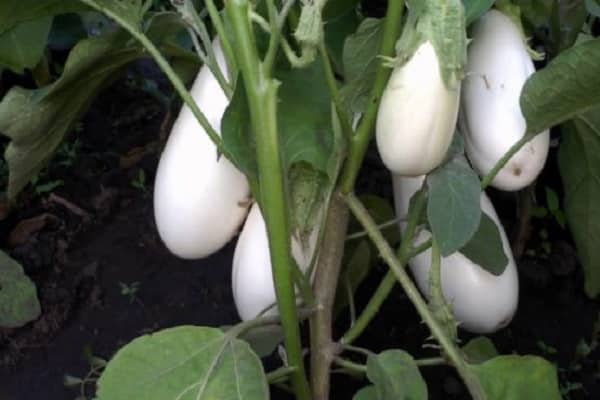
Pelican F1
Pelican F1 is a mid-season hybrid. After planting the seeds, the ripeness of the fruits occurs on day 115-120. The plant itself is undersized, the height of the bush does not exceed 60 cm. The yield of the hybrid is 1.5-2 kg per 1 sq. m.
Description of fruits:
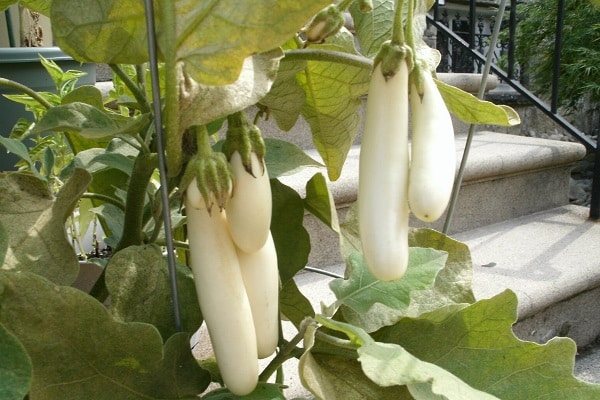
- weight - 200-250 g;
- form - stem-shaped;
- size - 15-18 cm in length;
- the pulp is elastic;
- the taste is of high quality.
The Pelican hybrid is intended for cultivation throughout Russia. The crop grows well both in greenhouses and in the open field.
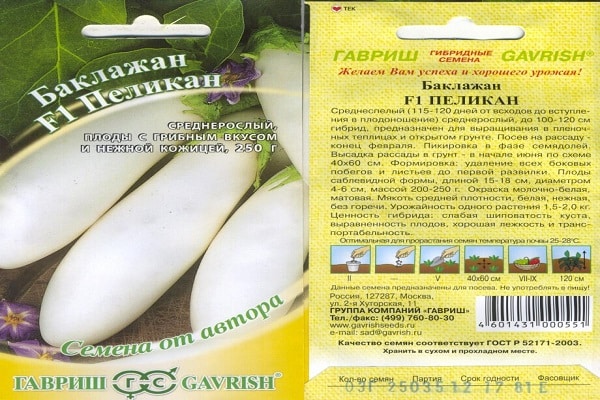
Swan
In terms of ripening, the Swan hybrid belongs to mid-season crops. The time span from the moment the shoots appear to the collection of the first fruits is 105-110 days. The bushes of plants are small. Their height reaches no more than 70 cm. The average yield of a hybrid is 18 kg per square meter. m.
Description of fruits:
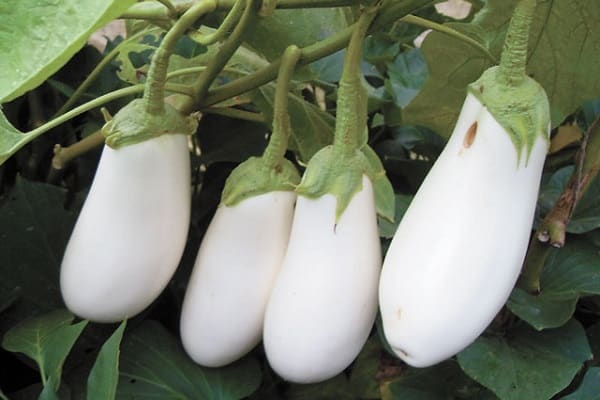
- weight - 200-250 g;
- shape - cylindrical;
- size - 18-20 cm in length;
- the pulp is tender;
- the taste is spicy.
The hybrid is suitable for indoor and outdoor cultivation. The value of Swan eggplant lies in its versatility, good transportation and long shelf life.

Ping Pong F1
Eggplant Ping Pong is a mid-season crop. The growing season from planting seeds to the first harvest is 110-120 days. The plant is undersized. The height of the bush reaches 60-70 cm.
Ping Pong eggplant can be grown outdoors, in greenhouses and greenhouses. In addition, the plant gives a good harvest when grown at home on the balcony.
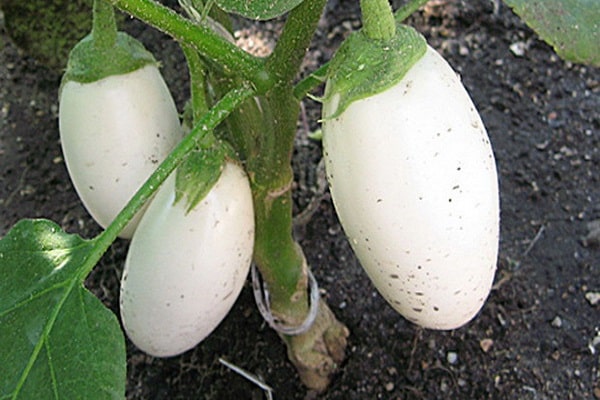
Description of fruits:
- weight - 60-70 g;
- shape - spherical;
- size - 5-6 cm in length;
- the pulp is tender, juicy;
- the taste is excellent.
The yield of the hybrid is quite high. It is 1.5 kg per bush. At the same time, the taste of Ping-Pong F1 eggplant is highly appreciated by gourmets of these vegetables.

Bambi F1
Bambi eggplant is one of the most decorative and truly excellent hybrids for any gardener. The fact is that this is such an unpretentious culture that, in addition to open and closed ground, it bears fruit well on window sills and in winter gardens.
The bushes themselves have a fairly intensive growth and a thick crown. But despite this, they reach a height of only 50 cm.
The yield of the hybrid is also pleasing. From 1 sq. m you can collect more than 4 kg of commercial quality eggplant.
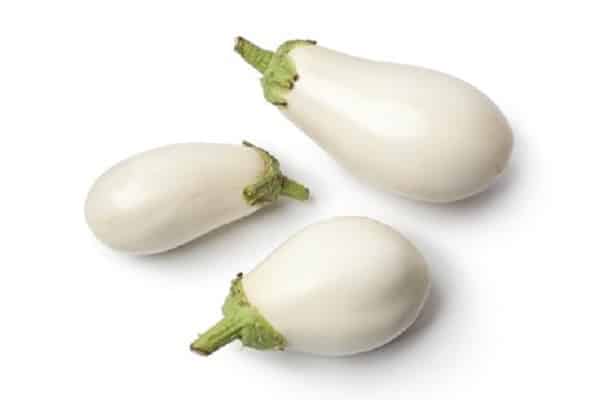
Description of fruits:
- weight - 70 g;
- shape - ovoid;
- the pulp is dense;
- the taste is of high quality.
It is also worth noting that the Bambi F1 is undemanding to good lighting and crop rotation, that is, to crop rotation.

Stork
White eggplant Stork is a relatively early maturing culture. After 90-100 days of planting, you can safely proceed to the first harvest. The recommended cultivation method is greenhouse structures. However, in the southern territory of the country, the culture gives good yield indicators in the open field. On average, from 1 sq. m, you can collect up to 7 kg of high quality eggplants.
Description of fruits:
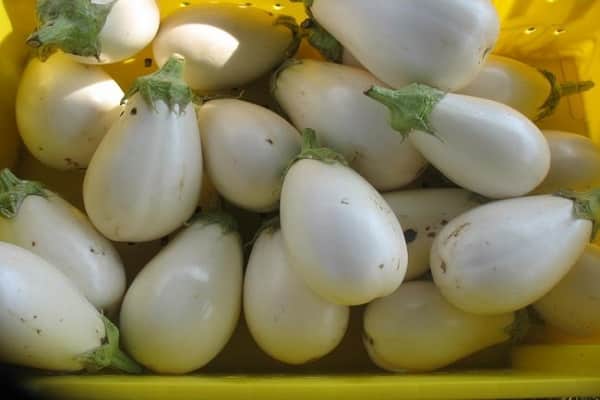
- weight - 90-100 g;
- shape - ovoid;
- the pulp is juicy, tender;
- the taste is good.
When choosing this hybrid, novice gardeners should take into account that it has its own characteristics. If you delay the harvest, the fruits of the Stork begin to harden and lose their consumer qualities. Therefore, it is not recommended to grow the plant for more than 100 days..

White egg
Eggplant White egg is an early maturing plant of Japanese selection. The period from germination of shoots to the first harvest is only 60 days. It is preferable to cultivate the crop indoors. But with timely and proper care, the plant can give a good harvest in open areas.
Description of fruits:
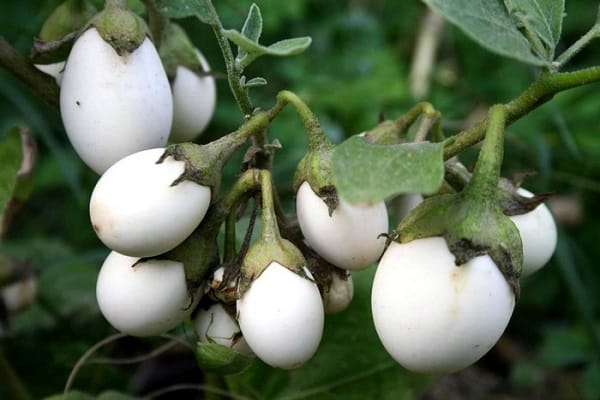
- weight - 200 g;
- shape - ovoid;
- size - 10 cm in length;
- pulp - medium density;
- taste - aromatic mushroom.
Plants of this hybrid do not require the formation of a bush and a garter to a support. In rare cases, their bushes reach 70 cm.
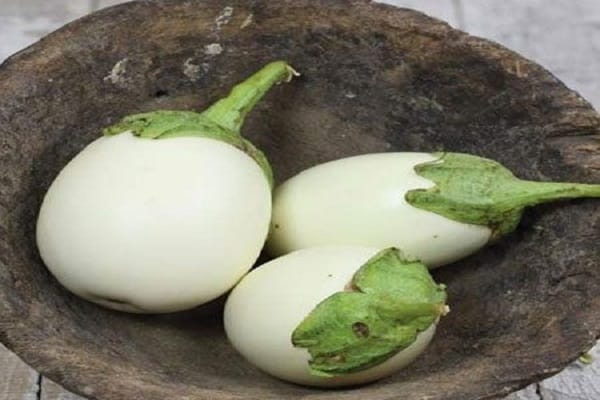
Bibo F1
Bibo F1 refers to early maturing crops. After germination, the first fruits can be harvested on the 85-90th day. Hybrid cultivation methods involve open and closed ground. The eggplant yield is about 4-5 kg per 1 sq. m.
Description of fruits:
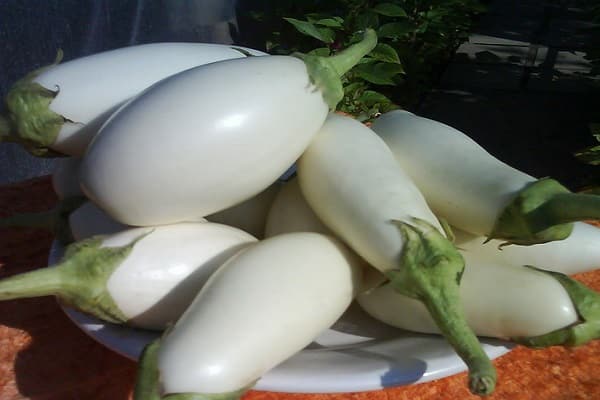
- weight - 350-380 g;
- shape - oval;
- size - 18 cm in length;
- pulp - medium density, tender;
- the taste is of high quality.
Bushes of plants reach 85-95 cm, so they need to be formed and tied to a support.
A feature of the Bibo culture is that even in extreme conditions and with minimal time spent in care, it gives stable yield indicators.
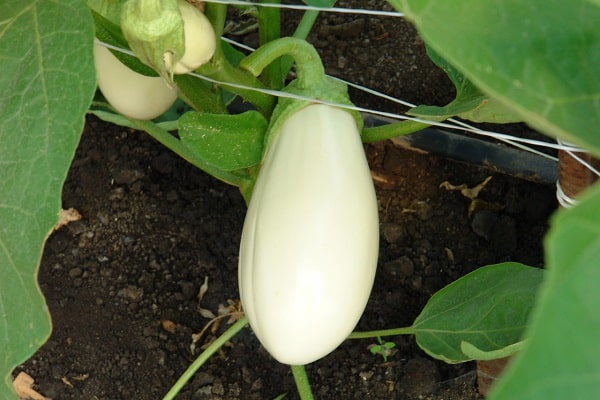
Advantages and Disadvantages of White Eggplant
Although the white eggplant was bred from common purple eggplant varieties, they still have their own distinct pros and cons.
Among the positive qualities it is worth noting:
- Complete lack of bitterness.
- Delicate and juicy pulp structure.
- Complete or partial absence of seeds.
- Wide use.
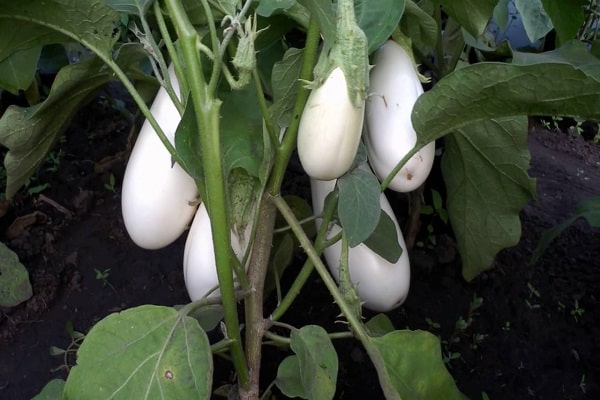
In addition, white eggplant contains a large amount of beneficial trace elements.
The disadvantages of culture include:
- High requirements for soil composition.
- Small shelf life.
- Poor resistance to temperature changes.
- Inability to collect seed material.
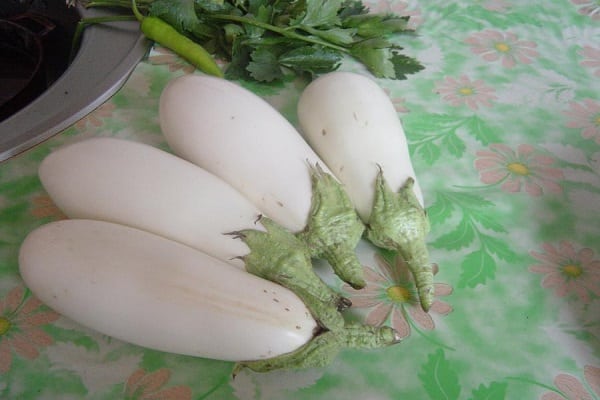
It is also worth noting that, unlike purple eggplant varieties, white hybrids have poor resistance to pests and diseases.... Therefore, they are in dire need of timely care.
As you can see, each white eggplant has its own individual characteristics. They differ in growing methods, fruit shape, yield and taste. However, these crops are united by the absence of bitterness and seeds, which is their undoubted advantage in the universality of use.
